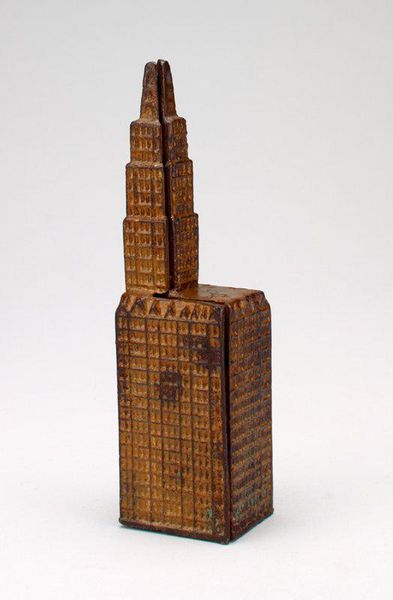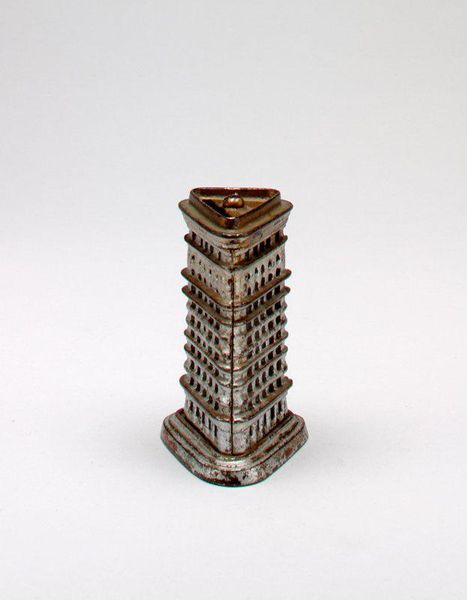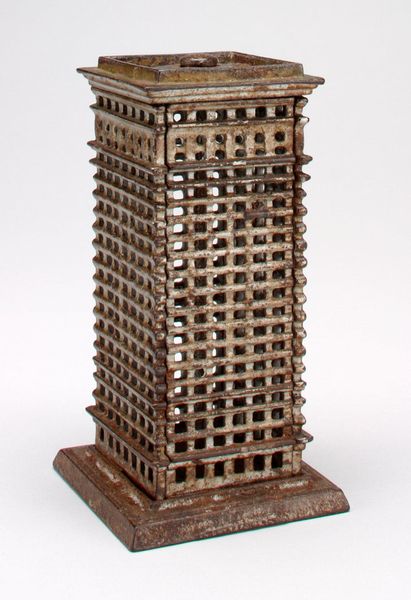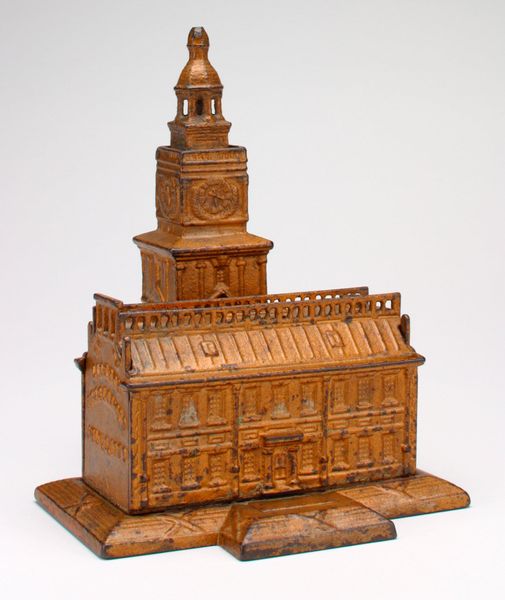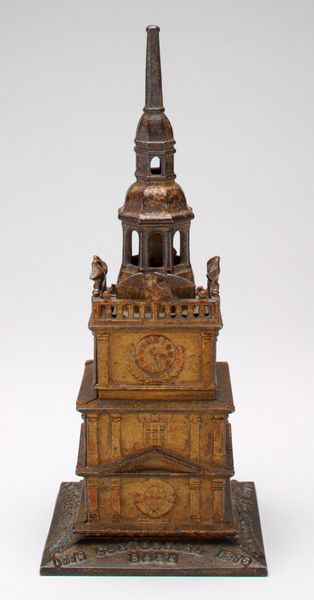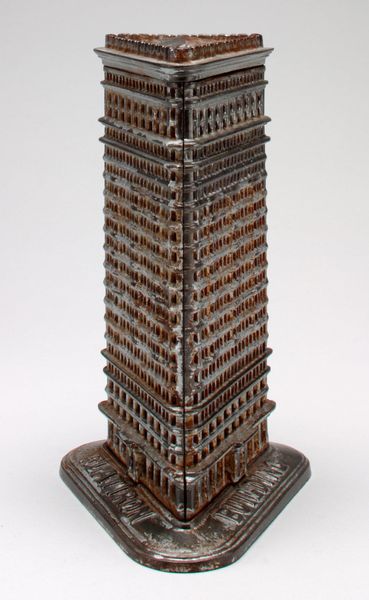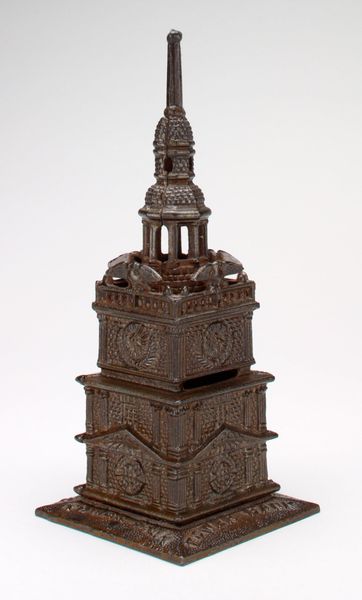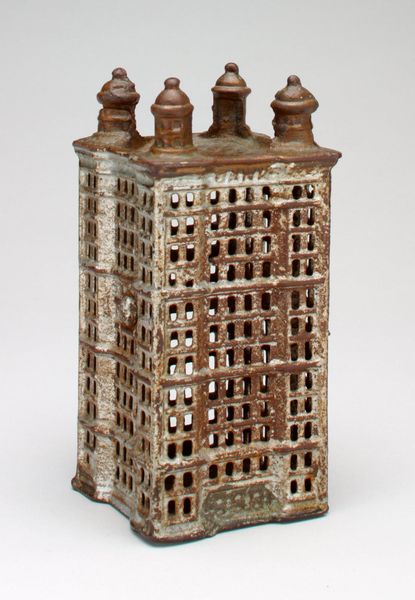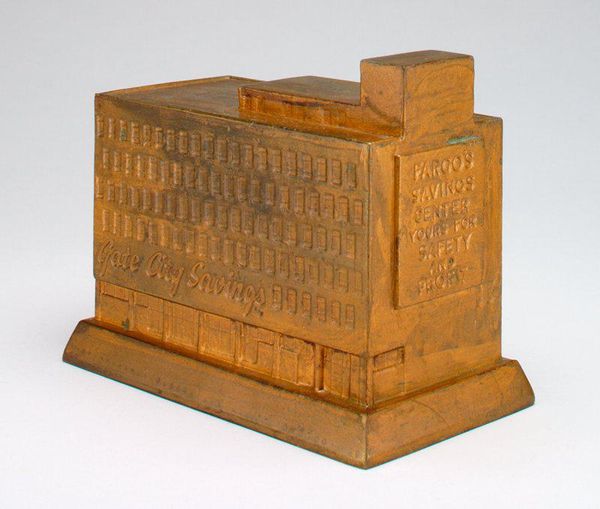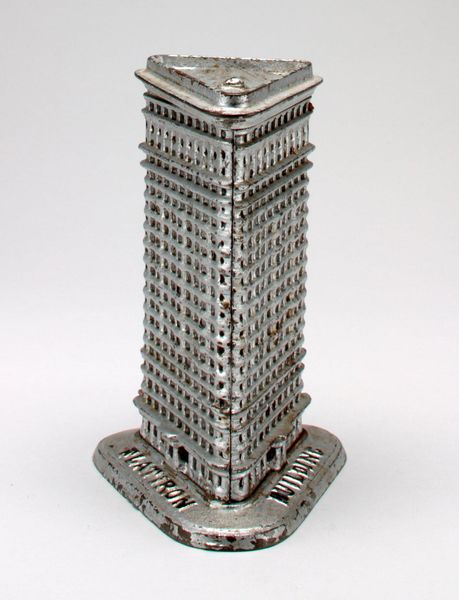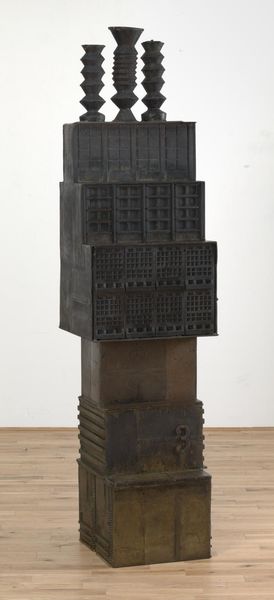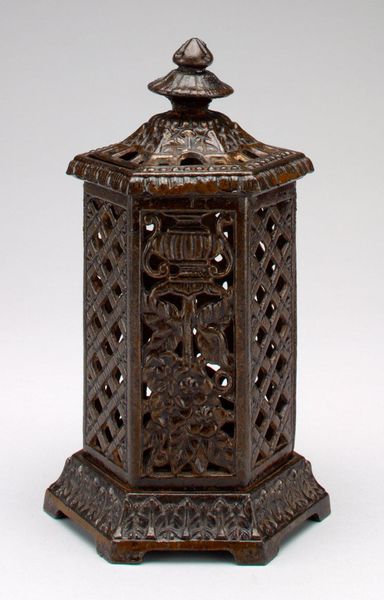
metal, found-object, sculpture, architecture
#
art-deco
#
metal
#
sculpture
#
found-object
#
structure design
#
sculpture
#
united-states
#
cityscape
#
miniature
#
architecture
Dimensions: 5 3/4 x 2 3/4 x 2 in. (14.61 x 6.99 x 5.08 cm) (approximate)
Copyright: No Known Copyright
Editor: This metal sculpture, an "-Empire State Building- still bank" from around the mid-20th century, has a definite art-deco vibe. It seems like such a tangible representation of optimism and progress from that era. What can you tell me about its cultural significance? Curator: It's interesting that you pick up on optimism. The Empire State Building was constructed during the Great Depression. While iconic today, it was nicknamed the "Empty State Building" early on due to low occupancy. This bank then speaks to a tension between aspirational imagery and the economic realities of the time, especially regarding consumer culture. Does this change how you view it? Editor: That adds a layer of complexity. Knowing it was also intended to be a bank… It transforms this symbol of architectural achievement into something much more grounded, about saving and security. What was the role of miniatures like these? Curator: Consider the broader context. Souvenirs and miniatures, particularly of architectural wonders, democratized access to culture. For those who couldn't visit New York City, owning this bank provided a tangible connection to a powerful symbol. The act of saving itself became associated with that monumentality. How does this relationship affect its perceived value? Editor: It makes me think about the power of everyday objects. I hadn't considered the idea of owning a piece of something so monumental. It shows the building wasn’t just an architectural achievement but a social and cultural one. Curator: Exactly! It reminds us that the politics of imagery are at play in seemingly innocuous objects, subtly shaping our perceptions of value, progress, and place. Editor: That's such a good point. I never would have considered it a tool to communicate ideology. Thanks for shedding some light on how cultural and economic forces shape our interaction with art.
Comments
No comments
Be the first to comment and join the conversation on the ultimate creative platform.
